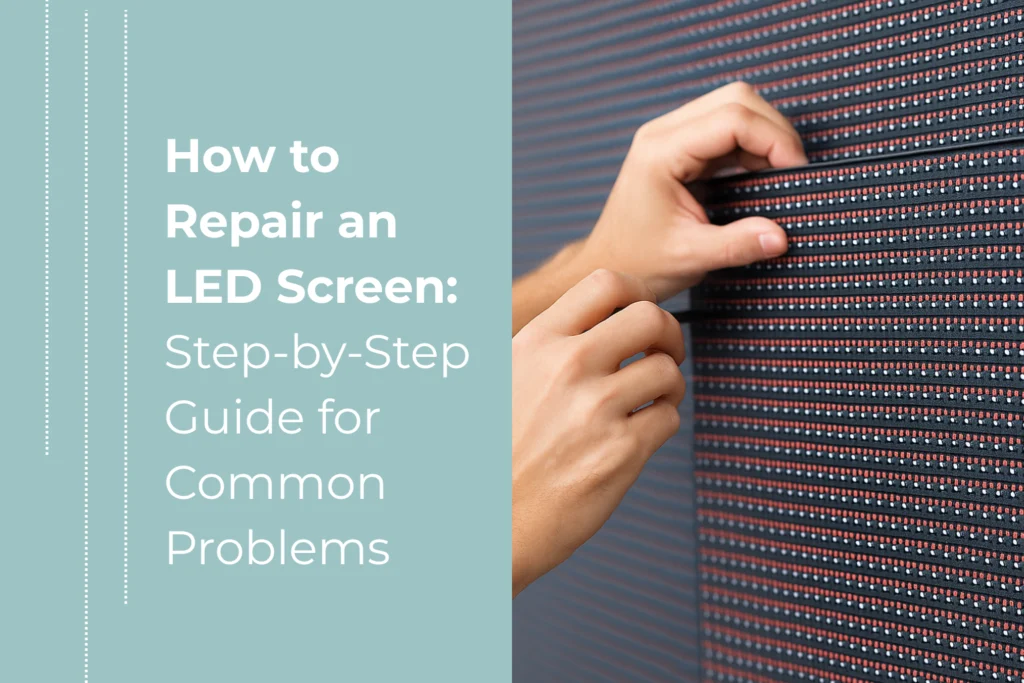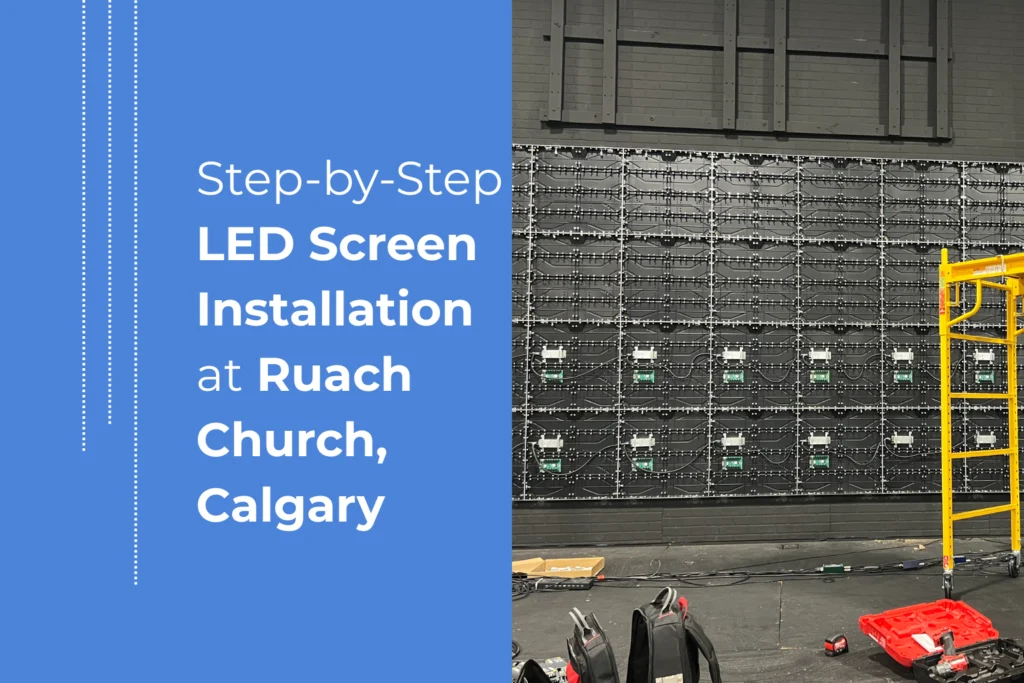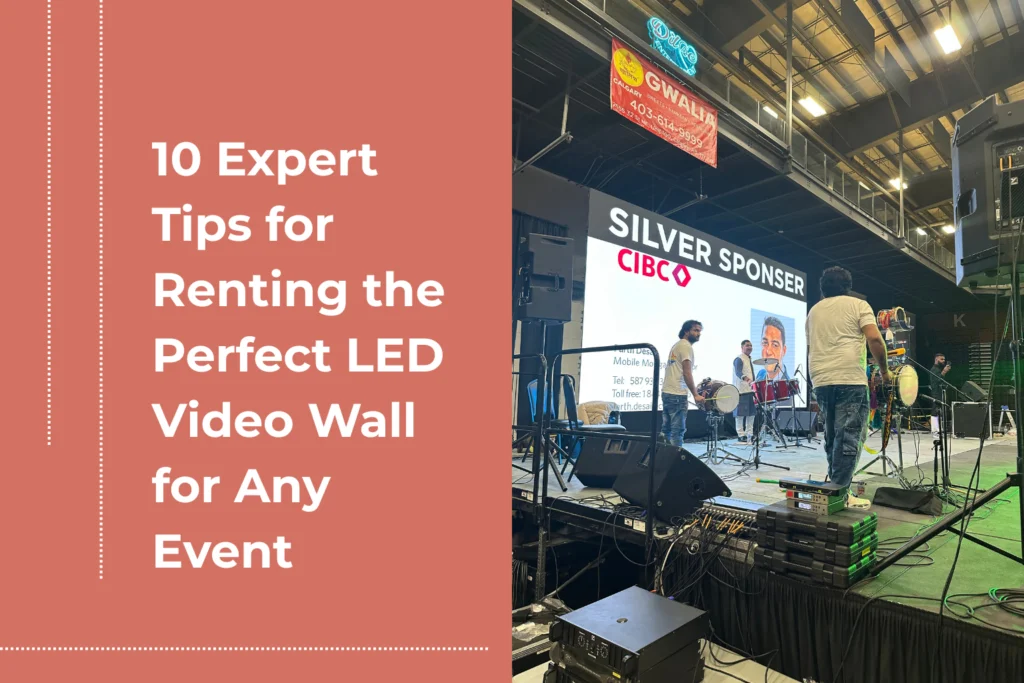What Is a Transparent LED Screen?
Simply put, a transparent LED screen is a type of digital display that allows light to pass through it, creating the unique effect of a screen you can see through when it’s not showing content. This is different from traditional LED video walls that are fully opaque. The way this works is by mounting LEDs on a clear or semi-transparent substrate—usually glass or acrylic—with gaps between the pixels. These gaps let ambient light flow through, preserving natural views and lighting behind the screen. From our hands-on experience, the transparency level typically ranges between 70% and 95%, which means these screens can be almost invisible when off but provide vivid, bright images when powered on.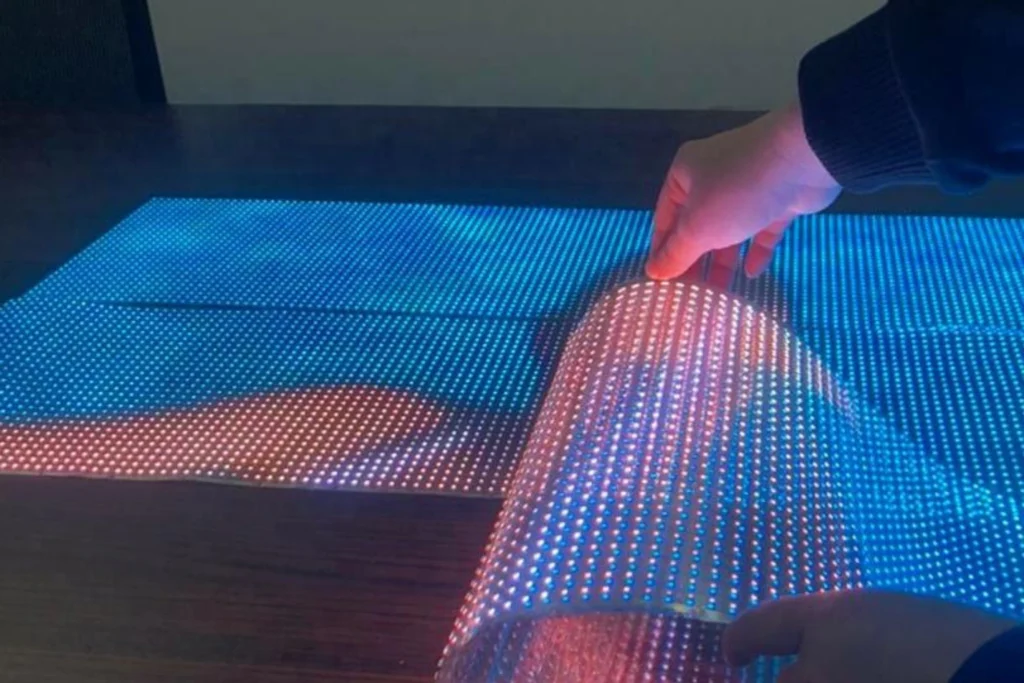
How Do Transparent LED Screens Work?
Understanding the basics of how these screens function can really help when considering if they’re the right fit for your project. Each pixel consists of tiny LED diodes placed on a transparent panel. The spaces between LEDs create transparency, but they also mean there’s a balance between how clear the image is and how much light passes through. One key term we often discuss with clients is pixel pitch—the distance between individual LEDs. Smaller pixel pitches deliver higher resolution and sharper images but reduce transparency. Larger pixel pitches increase see-through effect but might compromise image clarity when viewed up close. Brightness is another important factor. Transparent LED screens are designed to be super bright—some models offer up to 5,000 nits or more. This high brightness ensures content remains visible even under strong sunlight or bright venue lighting.Why Choose Transparent LED Screens? Our Experience
As part of the Canadian LED team, we’ve installed transparent LED screens in a variety of environments and seen firsthand why they’re gaining popularity. Here are some benefits that our clients appreciate the most:- Aesthetic Integration: The transparency means you don’t lose natural light or your view. This is especially valuable in retail spaces, corporate offices, or any venue where openness and visibility are priorities.
- Energy Efficiency: Compared to fully opaque LED walls, transparent LED screens consume less power because only a portion of the screen emits light.
- Lightweight & Slim: Their slim profile makes installation easier, often reducing structural support needs and lowering setup time and costs.
- Customizability: From curved installations to large architectural façades, transparent LED screens are adaptable to different shapes and sizes.
- Engagement: These screens create a futuristic, eye-catching effect that draws attention and enhances visitor or customer experience.

Canadian LED presents a breathtaking high-resolution LED video wall showcasing Van Gogh’s “Starry Night” in a modern atrium. Brilliant color, seamless design, and unmatched visual impact.
Where Are Transparent LED Screens Used?
Thanks to their versatility, transparent LED displays are now common in many sectors. Based on our work with led screens for venues across Canada, here are some common use cases:- Retail Windows LED Screens: Brands use them to showcase promotions or immersive visuals without blocking store interiors or natural light.
- Corporate & Public Buildings: Transparent LED faсades or partitions offer digital branding or information while maintaining architectural aesthetics.
- Events & Exhibitions: These screens create dynamic backdrops or interactive displays without overwhelming the space.
- Sports Venues: Ribbon boards, concourse signage, or advertising panels benefit from high brightness and transparency.
- Museums & Showrooms: The see-through effect enhances exhibits or product showcases with layered digital content.
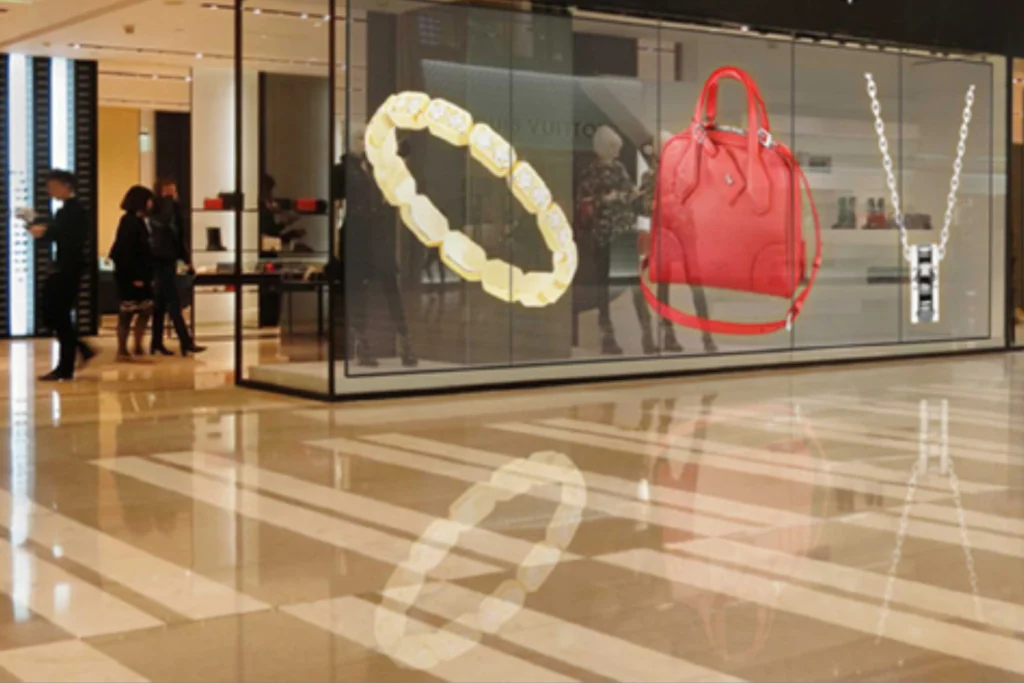
Canadian LED delivers premium transparent LED screens for retail environments. This installation showcases high-end fashion accessories with vivid clarity, blending seamlessly into the store design.
Factors to Consider When Choosing Transparent LED Screens
From consultations to installations, our team often guides clients through several important considerations:- Pixel Pitch & Viewing Distance: For retail windows or museum exhibits, finer pixel pitch works well because viewers are close. Larger venues might opt for wider pixel pitch, balancing image quality and transparency.
- Brightness Needs: Outdoor or well-lit spaces require higher brightness levels to maintain visibility.
- Transparency Rate: Depending on how much you want the screen to blend in when off, you might prioritize higher transparency over pixel density.
- Installation Environment: Consider structural support, mounting options, and how easy maintenance will be.
- Budget & Video Wall Cost: Transparent LED solutions typically cost more upfront than traditional LED walls due to specialized materials and technology, but the unique value they offer often justifies the investment.
Transparent LED Screens Compared to Other Technologies
We’ve also helped clients understand how transparent LED screens compare to other display types:| Technology | Transparency | Brightness | Lifespan | Cost | Ideal Use Case |
| Transparent LED Screens | High (70–95%) | Very bright (5,000+ nits) | 50,000–100,000 hrs | Higher upfront | Retail, architecture, events |
| OLED | Moderate | Moderate | 30,000–50,000 hrs | High | Indoor premium displays |
| LCD | Low | Moderate | 30,000–50,000 hrs | Moderate | Indoor monitors, signage |
| Projection Systems | None | Variable | Lamp-dependent | Lower upfront | Temporary or large screens |

